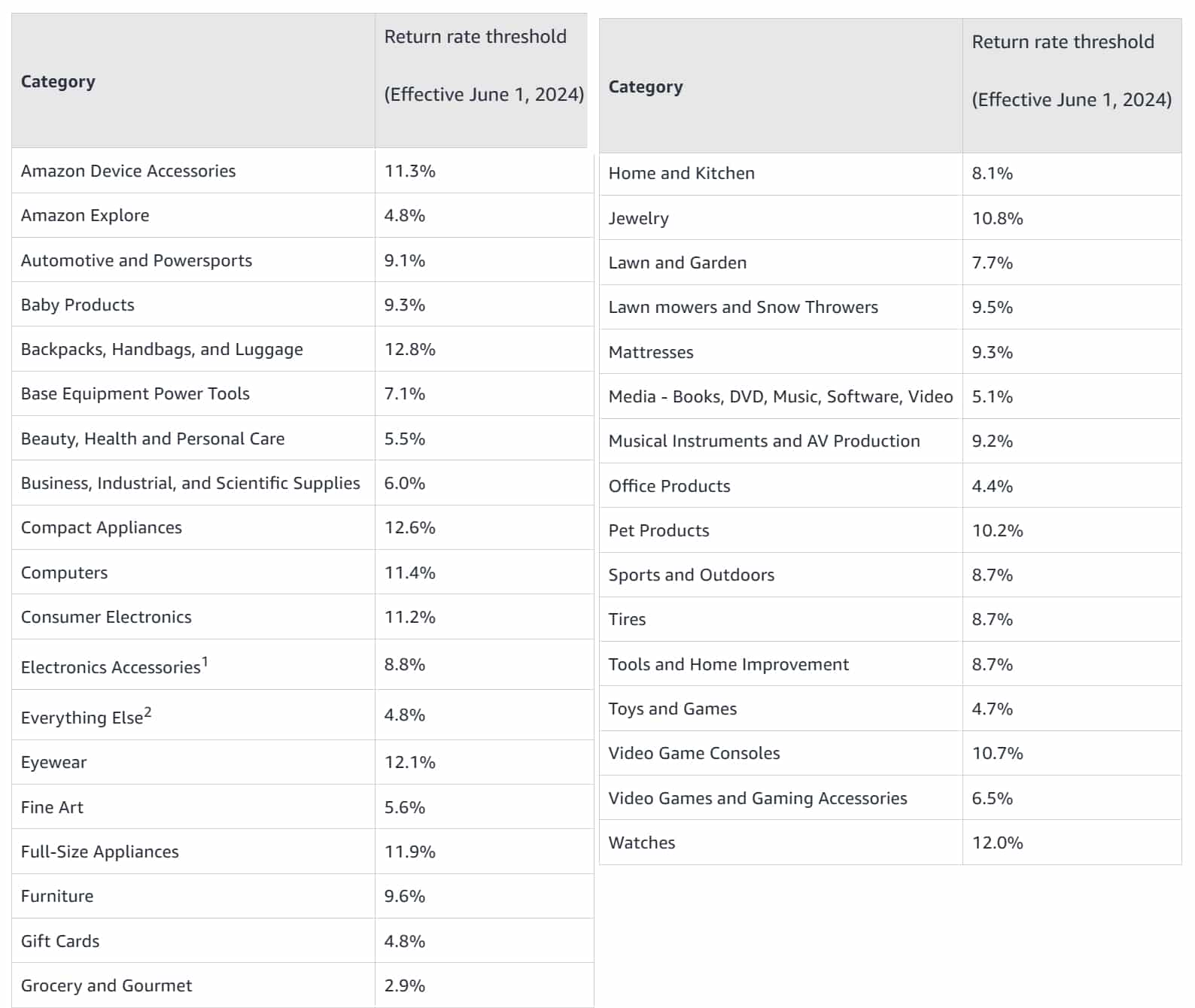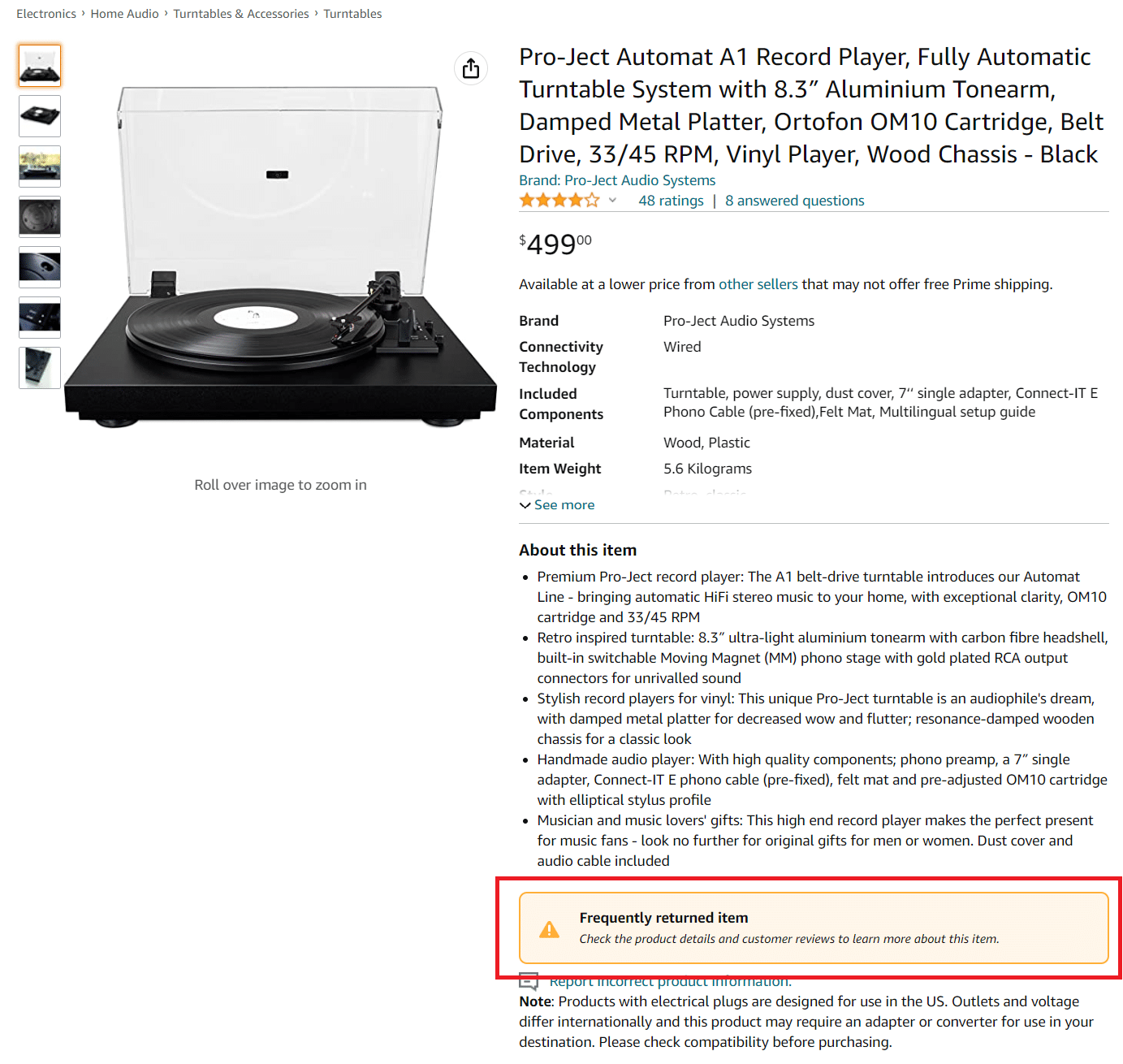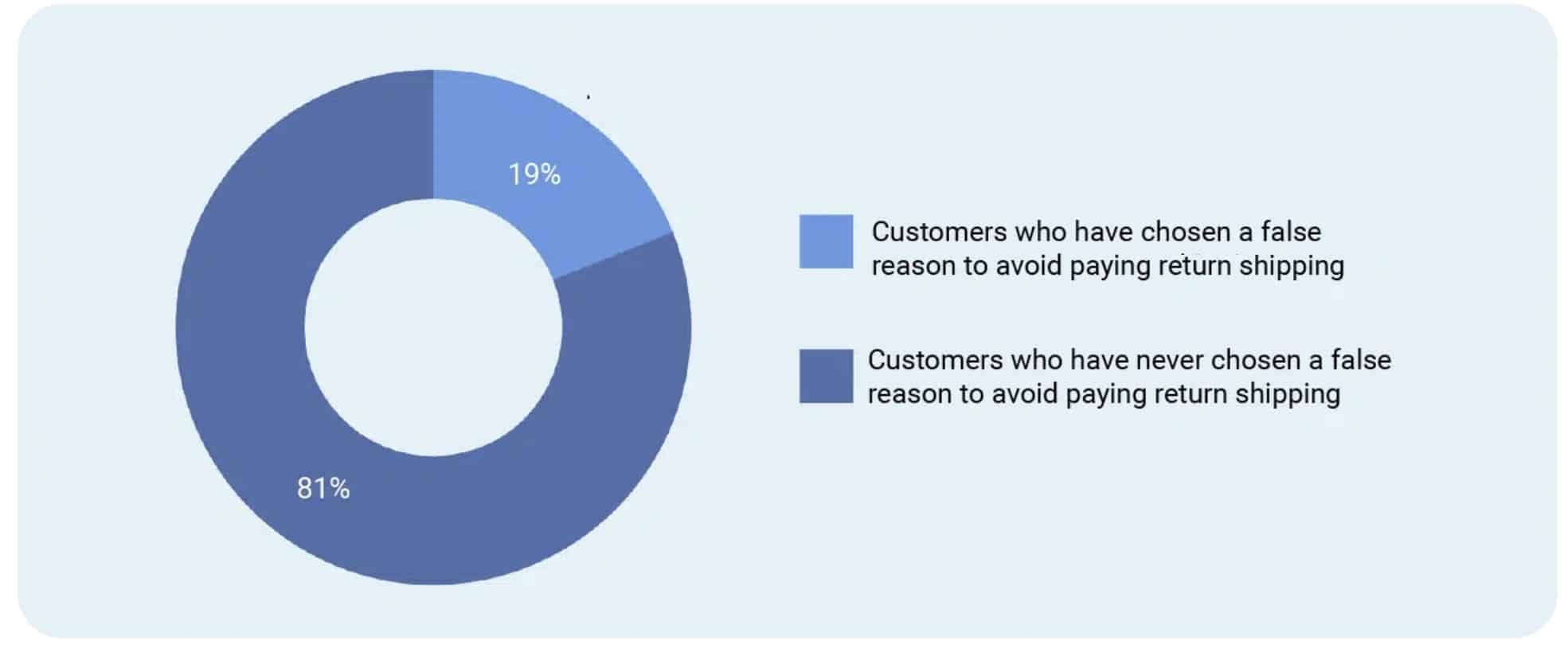Amidst New Amazon Return Fees, Overall Retail Return Rates Exceed 13%
In 2024, overall returns in retail accounted for 13.21% of total retail sales according to a new report. While no data was released specifically for Amazon, one can expect return rates for Amazon were near or exceeding these numbers, which is especially painful given that Amazon recently introduced a ‘returns processing fee' in June 2024.
Related Podcast: Episode 551 – Your Returns Are Killing Your Profit Margins
Amazon Introduced Returns Handling Fee
In June 2024, Amazon introduced a returns handling fee which is roughly $2-$4 depending on whether you exceed the returns threshold or not. Currently every single category return threshold is below the 13.21% estimated overall retail return rate meaning that products exceeding the rates below have a processing fee charged.

The returns processing fee is just one of a multitude of fees Amazon has introduced recently eating into seller's bottom lines.
Amazon Also Introduced “Frequently Returned” Badge
In addition to a returns processing fee, Amazon also introduced a “frequently returned” badge for items exceeding an above-average rate of return.

Many sellers have reported that having this badge on a product is effectively a conversion rate killer.
Fraud and “Wardrobing” Continue to be a Problem
The “2024 Consumer Returns in the Retail Industry Report,” conducted by Appriss Retail in collaboration with Deloitte, identifies several prevalent forms of return fraud. Notably, 60% of retailers reported incidents of “wardrobing,” where consumers purchase items, use them, and subsequently return them. Additionally, 55% of retailers encountered returns involving items obtained through fraudulent means, such as stolen credit cards or counterfeit bills, and 48% dealt with the return of stolen merchandise.
Amazon sellers face a different type of return fraud though. In EcomCrew's most recent consumer survey, 19% of respondents admitted lying about the reason for returning an item on Amazon in order to receive ‘free return shipping' (for example, they marked an item as being defective when it was actually no longer needed).

Despite retailers implementing stricter return policies to mitigate these issues, fraudulent activities persist. Michael Osborne, CEO of Appriss Retail, emphasizes the necessity for an AI-powered, data-driven approach to loss prevention to effectively reduce fraud while maintaining customer loyalty. Kevin Mahoney of Deloitte Consulting LLP advises that while addressing return fraud is crucial, retailers must ensure that their policies do not adversely affect customer experience. This fear of aggressively policing returns negatively affecting customer experience is likely one of the reasons Amazon's liberal return policies are unlikely to change any time soon.
Conclusion
Overall retail return rates actually dipped from over 14% in 2023. However, despite the decline, return rates continue to be a significant cost, especially for Amazon sellers.



